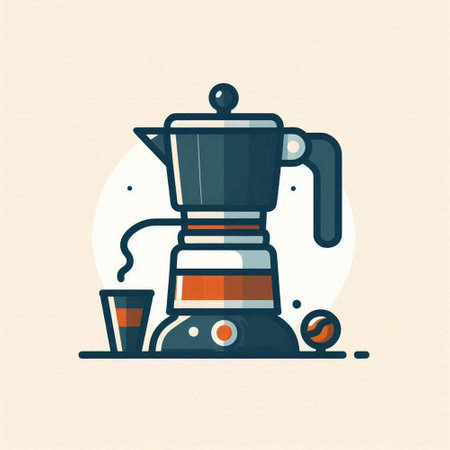Understanding the Coffee Roasting Process
If you’re serious about roasting your own coffee, it’s crucial to first get a clear picture of what actually happens during the roasting process. Coffee roasting isn’t just about turning green beans brown—it’s a complex transformation that involves physical and chemical changes. As raw coffee beans are exposed to heat, they lose moisture, expand in size, and undergo several important reactions like the Maillard reaction and caramelization. These changes unlock the flavors and aromas we all crave in a great cup of coffee. What does this mean for your equipment choices? Well, every stage of roasting—from drying to first crack to development—requires precise control over temperature, airflow, and timing. The right equipment lets you manipulate these variables with consistency and accuracy. Whether you’re looking at home roasters or professional-grade machines, understanding these transformations will help you decide which features are essential for achieving your ideal roast profile.
2. Types of Coffee Roasting Machines
When it comes to roasting coffee, the type of machine you choose plays a huge role in shaping both the process and the final flavor of your beans. In the United States, coffee roasters generally fall into three main categories: drum roasters, air (or fluid bed) roasters, and hybrid models. Each type has its own unique set of features, advantages, and considerations. Below is an overview to help you understand what sets these machines apart and why they matter for your roasting journey.
| Type | Main Mechanism | Common Use | Key Pros | Key Cons |
|---|---|---|---|---|
| Drum Roaster | Beans are tumbled in a rotating drum heated by gas or electric source. | Most common for specialty cafes and commercial use. | Even roasting, classic flavor development, large batch capability. | Bigger footprint, slower heat adjustment, may require more maintenance. |
| Air (Fluid Bed) Roaster | Hot air circulates rapidly to roast beans while keeping them suspended. | Popular with home enthusiasts and small-batch businesses. | Faster roasting, cleaner cup profile, easy to clean. | Smaller batch size, less traditional flavor depth, can be noisier. |
| Hybrid Roaster | Combines elements of both drum and air roasting technologies. | Innovative roasters seeking best of both worlds. | Greater control over flavor profile, flexible batch sizes, energy efficient. | Tends to be more expensive, more complex to operate. |
The choice between these machines often comes down to your goals—whether you’re aiming for volume production or micro-batch experimentation—and the flavor profiles you want to achieve. Drum roasters remain the industry standard for many U.S. coffee shops due to their reliability and consistency. However, air roasters are making waves among American home roasters and boutique operations who crave speed and clarity in their brews. Hybrid models appeal to those willing to invest in versatility and innovation. Understanding these differences will guide you toward equipment that truly meets your needs as you dive deeper into the art and science of coffee roasting.

3. Essential Features to Look For
If you’re serious about stepping up your coffee roasting game, understanding the key features and technology that truly impact your setup is crucial. Today’s coffee roasting equipment offers a range of functionalities, but knowing what matters most can help you make smarter investments for consistent results.
Precision Temperature Control
Arguably the most critical feature in any roaster is how it handles temperature control. Consistency is king—an even, stable heat source means every bean gets roasted just right, batch after batch. Look for machines with digital PID controllers or advanced thermostats that allow for precise adjustments. This way, you’ll avoid scorched flavors or uneven development, which can ruin an otherwise perfect batch.
Real-Time Data Monitoring
Modern roasters often come equipped with digital displays or interfaces showing live data: bean temperature, drum speed, airflow, and even humidity levels inside the drum. This isn’t just for tech geeks—it’s a game changer for anyone who wants to dial in their roast profiles and repeat them reliably. The ability to monitor and record these variables helps you hone your craft and troubleshoot inconsistencies as they arise.
Software Integration
Many American specialty coffee shops and home enthusiasts swear by software-integrated roasters. These allow you to track, save, and share roast profiles through intuitive apps or computer programs. This kind of tech isn’t just flashy; it’s practical. Whether you want to compare last week’s light roast to today’s experimental blend or collaborate with other roasters online, having robust software support makes it all possible.
Additional Considerations
Don’t overlook features like easy cleaning mechanisms (think removable chaff collectors), safety shut-offs, and solid build quality—these matter just as much for everyday use. And if you plan on scaling up production, consider modular designs that let you upgrade components without replacing the entire unit.
Ultimately, investing in equipment with these essential features ensures not only better coffee but also a smoother workflow and more enjoyable roasting experience tailored for both passionate hobbyists and ambitious professionals across the U.S.
4. Sizing Your Equipment: Home vs. Commercial Roasting
When it comes to coffee roasting, one size definitely doesn’t fit all. The equipment you need depends heavily on whether you’re roasting for personal enjoyment at home or running a full-scale commercial operation. Understanding your scale will help you avoid overspending or under-equipping yourself, ensuring you get the most out of your coffee experience.
Home Roasting: Small Batch, Big Flavor
If you’re a home enthusiast, your focus should be on compact and user-friendly machines that allow you to experiment without taking up too much counter space. Most home roasters are designed for small batch sizes—typically between 100g and 500g per roast—making them perfect for personal use or sharing with friends. These machines often come with built-in safety features, easy-to-use controls, and minimal maintenance requirements.
Commercial Roasting: Scaling Up for Business
For those venturing into professional roasting, the stakes (and the gear) are much higher. Commercial roasters are built to handle larger capacities, often starting at 1kg per batch and scaling up to several hundred pounds per hour. They require more space, robust ventilation systems, and higher power inputs. Additionally, they offer precise control over variables like temperature profiling and airflow to ensure consistency across batches—a must-have for any serious business.
Comparing Home vs. Commercial Roasting Equipment
| Feature | Home Roaster | Commercial Roaster |
|---|---|---|
| Batch Size | 100g – 500g | 1kg – 100kg+ |
| Footprint | Small (fits on countertop) | Large (requires dedicated space) |
| Power Source | Standard outlet (110V/120V) | High voltage (220V/240V+), often gas-powered |
| Control Features | Basic temperature/timer controls | Advanced profiling & automation |
| Price Range | $200 – $1,000 | $5,000 – $50,000+ |
Key Takeaways for Choosing Your Equipment
Before you buy, consider your goals: Are you looking for a weekend hobby or aiming to supply local cafes? For home use, prioritize simplicity and safety; for commercial purposes, invest in scalability and precision. Making the right choice from the start can save you money—and headaches—down the road.
5. Must-Have Accessories and Tools
If you’re serious about coffee roasting, having the right accessories can make all the difference in both consistency and convenience. Beyond the roaster itself, these add-ons help streamline your workflow and elevate your results—whether you’re roasting at home or running a small business.
Thermometers & Data Logging Devices
Precision is key in roasting, so an accurate thermometer or a digital data logger is essential. These tools let you monitor temperature changes second by second, allowing for repeatable results and easy troubleshooting when dialing in your roast profiles.
Bean Cooling Trays or Cooling Fans
Rapid cooling is a must to halt the roasting process at just the right moment. Dedicated bean cooling trays or fans are much more effective than makeshift solutions and ensure your coffee doesn’t overdevelop after leaving the roaster.
Scales & Measuring Spoons
Consistency starts with precise measurements. Reliable digital scales help you portion green beans accurately before roasting and weigh your final batches for consistent serving sizes. Measuring spoons are also handy for cupping sessions or adding flavoring agents if you’re experimenting.
Sample Roasters & Cupping Supplies
If you’re testing new beans or roast levels, a sample roaster (or even a popcorn popper) lets you experiment without committing to a full batch. Pair this with cupping bowls, spoons, and a grinder dedicated to samples so you can taste-test like the pros.
Cleaning Tools
Maintenance matters! Brushes, vacuum attachments, and non-abrasive cleaners keep your equipment running smoothly and your coffee tasting pure. A clean roaster is less likely to impart unwanted flavors from old oils or chaff buildup.
Bonus: Logbooks & Apps
Don’t underestimate the value of tracking your roasts. Whether you prefer an old-school notebook or a digital app, keeping notes on times, temps, and results helps refine your process over time—turning good batches into great ones consistently.
6. Maintenance, Safety, and Longevity
Keeping your coffee roasting equipment in prime condition is essential for both the quality of your roast and the safety of your space. In the U.S., where food safety standards are high and liability is a real concern, regular maintenance isn’t just good practice—it’s a necessity.
Routine Cleaning: Your First Line of Defense
Roasting machines, whether fluid bed or drum-style, accumulate chaff, oils, and residue with each batch. Make it a habit to clean out chaff collectors and wipe down surfaces after every session. For more thorough cleaning, deep-clean removable parts weekly or biweekly, depending on usage. This helps prevent buildup that can lead to fires or taint future roasts—an especially important point for American home roasters who often roast indoors.
Stay Safe: Mind Your Vents and Wires
Proper ventilation is crucial not just for roast quality but also for safety. Check venting systems frequently for blockages or leaks that could release dangerous carbon monoxide indoors. If your roaster is electric, inspect cords and connections regularly; U.S. electrical codes are strict for a reason. A frayed cord or overloaded outlet can cause more than just downtime.
Regular Inspections and Professional Servicing
Don’t overlook annual checkups by a qualified technician—especially if you run a small business or roast frequently at home. Americans often rely on certified professionals for appliance servicing, which can extend the life of your investment and keep you compliant with local fire codes.
Keep It Documented
Maintain a simple log of cleaning schedules, part replacements, and service visits. Not only does this reflect best practices seen in U.S. cafes and roasteries, but it also helps troubleshoot recurring issues before they escalate.
The Payoff: Consistency and Peace of Mind
By prioritizing maintenance and safety, you ensure consistent results batch after batch—and protect both your investment and your peace of mind. Whether youre roasting as a hobbyist or hoping to open your own micro-roastery someday, these habits set you up for success the American way: safe, reliable, and built to last.


